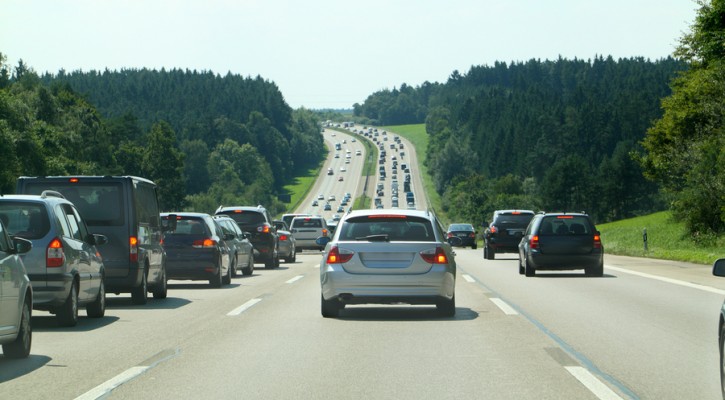
Ask The Driving School Instructor: Two-Second Rule
October 6, 2014
Question: What is the two-second rule?
Answer: The two-second rule is the rule most states have adopted to keep a safe following distance between your vehicle and the vehicle ahead. It’s the most simple way to know if you’re following another vehicle too closely or not.
To keep a safe following distance, some older drivers were taught, and still hold to the rule, of keeping a distance of one car length for every 10 mph you’re traveling. In other words, if you’re traveling at 40 mph, you should keep a distance of at least four car lengths between you and the vehicle ahead. Some parents may still be teaching that rule to their teen driver but the rule doesn’t work very well. The main reason it doesn’t work is that it’s hard for most people to visually determine a car length. What exactly is a car length? Are you talking about a 1972 Ford station wagon or a VW Beetle? For those of us who may be math challenged, the math just gets too complicated.
The two-second rule is much simpler. When the car ahead passes a line or a shadow in the road, start counting “one-thousand-one, one-thousand-two.” If you get to that spot in the road before you’re finished counting, you’re following too close. You need to back off a bit until you’re no less than two-seconds behind the vehicle ahead. The great thing about the two-second rule is that it works whether you’re traveling at 10 mph in rush hour traffic or at 70 mph on the interstate.
Your reaction to an emergency ahead takes time. If the vehicle ahead should suddenly stop, it can take up to three-quarters of a second before you’re even aware that it has stopped. Then you need time to decide what to do; should you slam on the brakes or should you try to swerve into another lane to avoid it? If you want to move over into another lane, are there any other vehicles in the way? The decision-making process takes time. Once you have decided what to do, you have to put your plan into action. If you decide to slam on the brakes, you have to move your foot from the gas pedal over and fully depress the brake pedal and that takes even more time. Once you hit the brakes, it will still take time before your vehicle can come to a full stop.
On average, it can take from up to one and a half seconds from the time the emergency starts until you fully react and put your escape plan into action. That’s known as the “reaction time.” One and a half seconds may not seem like a long time but remember, if you’re traveling at 40 mph, your vehicle will travel almost 60 feet in that amount of time. That’s a long way! When you add the distance after you hit the brakes until you come to a complete stop, you have the “total braking time.” The distance adds up!
The two-second rule provides the minimum distance to give you enough time to react and take action if something should happen ahead. Three or more seconds is even better and some states require at least a three-second distance. If it’s raining or if you’re following behind a motorcycle, you should keep a four second distance. In the rain, the roads may be slippery and you need the extra distance in case your vehicle starts to skid. You need to keep a longer distance behind motorcycles because they can stop so much more quickly than a larger, heavier vehicle and you’ll need more distance to react if something happens ahead.
